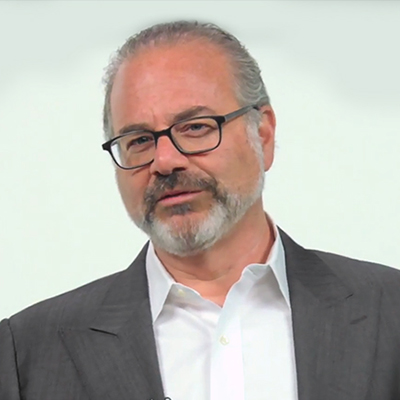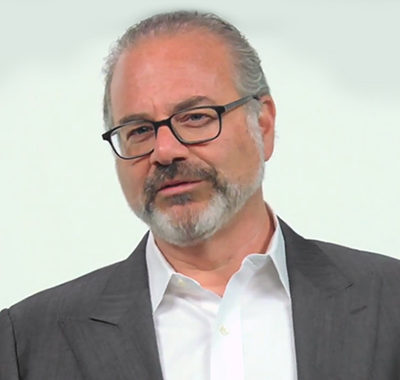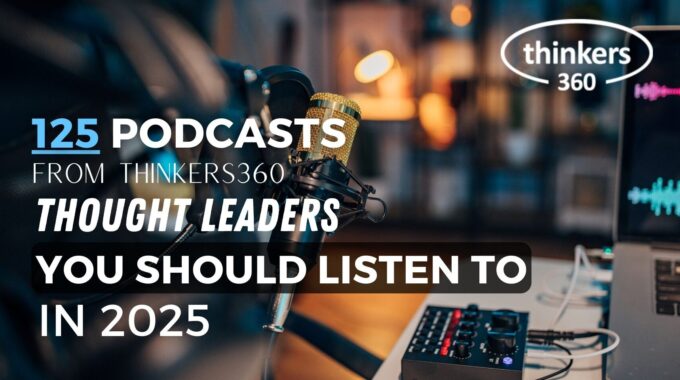Check out Thinkers360 annual leaderboard for the top 50 global thought leaders and influencers on…
Peter Winick Discusses Monetizing Your Platform Strategically – Go Beyond the Book

Source: Peter Winick Discusses Monetizing Your Platform Strategically – Go Beyond the Book, and 3 Ways to Strategically Leverage your Book & Platform
Everybody is doing it. With easy-to-use, off-the-shelf publishing software, even producing a good looking book isn’t that difficult. Books are being written and published at the highest rate in history.
It’s selling books that is the problem. Many authors write a book and simply expect the sales of the book to propel them towards riches and financial success. But alas, Oprah is no longer on the air, and even getting a spot on The Today Show isn’t easy. In fact, the one shot grand slam strategy is pretty much the highest probability way of striking out at your first and only chance at bat. Most books published today don’t make money at all. But many authors make a lot of money, using the book as a component of a solid platform.
So what is an author to do? Very simply, you must go beyond the book.
To be successful with a book today means that you have to leverage certain specific business concepts and leadership content in a transformative fashion. I looked over the strategies that our best and most financially successful authors and thought leaders adopted to build their platforms this past year. The book is just one component to success.
The strategies identified clearly reveal that if you approach your publishing and marketing with a can-do attitude and adopt new methods with multiple income streams to reach the right target audience with refreshing value-added content and services, you will maximize what you get out of your time, efforts and investment.
1) Target Your Media and Your Market Carefully
The best way to start is to develop a targeted and focused outreach strategy to reach your target market and the media that serve them.
Step 1 — Define your Target Market— Who is your book really designed to help, serve or entertain? Create at least two or three different personas describing the age, sex, education, location, income level, work focus, role, title, job function, social groups and orientation of the people who make up your target market(s).
Step 2 – Determine where they “hang out” both online and offline—what blogs are they reading? What other authors do they follow? What trade magazines are they reading? What associations or industry groups are they members of? What do they do to reach their people?
Step 3 – Value-added Outreach—Deliver content that is of value to these people. Feel their pain. Champion their cause. Fulfill their highest desires. It could be with excerpts from your book, tools, articles, videos, or it could be fresh new material that is simply from you.
It’s easier to find 100 blogs that your target market is following and get 70 of them to run your content than it is to try like crazy to get on The Today Show. A single problem solving tips article or a feature story in the right magazine, or trade journal may be worth much more than a short talking head interview on the major networks. You will be more effective to offer value-added content to the right media every time.
2) Develop and Leverage Testimonials
The value of a single testimonial (be it from a fellow author, business person, or an academic or professional colleague well known blogger, columnist, etc.) is significant. It helps convert browsers into a buyers. The trusted evaluation and endorsement bestowed sways someone that is on the fence to move from browsing to buying. However, you need more than just a few testimonials.
Tremendous leverage comes having a dozen really great testimonials. It’s important that the people you get to endorse your book have a following much greater than yours. The action plan you develop and implement getting these testimonials can be designed and deployed so that the person who endorses you helps spread the word to their followers. For example 10 authors that have a following of 100,000 people each is a million targeted people with a much higher propensity of buying your book. This way, each testimonial becomes an endorsement that is directed to an audience that has the same circulation as many of the top targeted media you might seek coverage in. To do this you must think ahead and plan to do much, even all, of the work for them—meaning you have to create a variety of collateral, properly formatted communications for them to use (tweets, announcements about the book, press releases, videos etc etc). Be disciplined in asking them when to spread the word about your book and always, always offer to do the same for them.
3) Give Plenty of Books Away – But Only to the Right People!
For most authors and thought leaders the book is just one format that their content exists in (and quite frankly one that usually isn’t that profitable for the author). Be crystal clear about who your target market is. Identify the ways to get those books into those people’s hands. Now think of who can influence them if they were to send them a book. You can send them out with a personal note or ask them if you can send books to them if they would them deliver them to the type of people you are trying to reach. If you want to get a book to an executive for an endorsement, you don’t send one book to the executive directly. You send two or three or even four books to the executive’s secretary, or executive assistant, asking them to pass it on to the executive. You can yet reach out to your network to see who personally knows the type of people you are trying to reach and offer to send a copy out on their behalf. If you want a speaking engagement with a large company, or organization, you don’t send one book to the president. You send a dozen books to the Presidents Executive Assistant with a request to give them to each of the reporting Directors and Vice-Presidents and meeting planners and their staff. Then you follow up with a business proposal to try to close a major deal.
4) Create an Assessment Tool
What will happen if people read your book? The promise of many books is that as a result of people reading or consuming it they will be able to think, act, believe, behave, perform etc in a quicker, better, faster, or easier way than they have before. If you can’t answer that question, put the energy and effort into being able to clearly articulate the answer to in a concise manner. Once you know the answer to that question, now you can develop an assessment tool that measures how well they are progressing or moving towards performing at a higher level. Ideally you would develop a series of assessment tools (i.e.,—a free version, say that evaluates one crucial element for improvement, and then a number of pay versions that that measure individual progress, team progress and organizational progress, professional prowess). Corporate clients as well as consumers love assessment tools. They are a viable, scalable and incredibly profitable extensions of your content. They are useful products, services, and tools that allow for product diversification and intense socialization of the book content and purposes.
5) Offer Several Types of Coaching
There are several ways in which you can monetize your content via coaching.
-
- delivering coaching one to one
- delivery coaching in groups
- licensing your coaching process to others to deliver
Clearly document the coaching process you develop and utilize. Make sure it can be readily duplicated and systematized. Include procedures, content, models, metrics, reporting, tracking for accountability, desired outcomes, and other elements to ensure that people achieve real improvement as a result of the coaching they receive.
6) Offer a Variety of Workshops
Your content can easily be converted into several workshops. The key variables are length (2 hours, 2 days, etc), and purpose. Workshops can be customized to meet the needs of the client and the audience (by function, role, industry, demographically, geographically, etc). Delivery of the workshops can be done by the author, by others that have been carefully selected and trained in the methodology etc. Workshops can be done in person, by telephone, teleconference, or by video web conference. You can also vary the price a number of ways based on the time, location, and the number of people that attend.
7) Develop Strategic Processes For Leveraging Your Speaking
Many authors focus on keynote speaking because it has traditionally paid rather well. However, the market has shifted dramatically and it is more difficult to manage and achieve success in speaking for many reasons. You can aim at developing a paid speaking income and business. You might need to start off speaking for free. Some authors and thought leaders continue to speak for free, (at least on occasion) particularly when the target audience is closely aligned to their target market and they can quantify the benefit as a result of all the other opportunties they receive from being there. No matter where you are at in your career, do not view a speaking gig as a transaction. This is a very expensive mistake. A speaking event should be the beginning of a long term relationship with all the people at the event. It should not end when the applause dies down.
Whether you are being paid or not, develop a plan that covers the pre-event, event and post-event phases. You have a unique opportunity to learn a lot about your sponsor, the client, the audience members, and the people they work and communicate with. Your plan needs to be specifically designed to allow you to develop a deep understanding of their issues, struggles, culture and concerns and therefore be in a great position to offer specific solutions that will have a vital and positive impact on them. Identify their pain! Deliver help for the needy! Give them ways to reach you later! Capture their contact information! Follow up with them later.
8) Develop Video-based Training
Develop a video library containing 6 to 10 themes that are subsets of your work. For each of these themes you should be able to come up with 5 to 10 (sometimes more) 2-5 minute video vignettes. They should be able to stand alone (although bundling a few is ok) and they don’t need to be produced in an expensive studio, in most cases you can produce them yourself with the technology that is out in the market and inexpensive. Some of these vignettes can be given away for marketing purposes but given that they are modular you can package and bundle them to meet the needs of a client. These are often licensed to large companies for special showing on a per trained person basis or on an enterprise basis. Many companies also fund training for their clients – not just their employees.
9) Develop New Tools, Utilities and Applications
Developing tools to help drive the learning is another way to leverage your content. Tools are getting easier and cheaper to develop every day. They do not have to be mechanical or mathematical. They can be literary, colorful or artistic. Games can also be developed for use as learning tools. Make them useful and make them fun and enjoyable.
10) Reformat and Repurpose Your Content
You don’t need to create new content as often as you probably are doing it today. Once you create content it is far easier and more profitable to simply make it available in all the different ways clients will want to buy it. Create an inventory of your content, note the format it is in (articles, manuscripts, workbooks, Power Points, videos, etc). Reformat them. For example take your best 5 articles and create videos from them. Take your workbooks and create a tool-kit. Write it once and make it available any way and every way your people want it available to them. Price it so that it sells.
11) Develop Your Consulting Business
In most cases the book bestows the author with a very personal process or methodology or at a minimum a distinct point of view. This is inherently embedded in the book and the author and the work he is capable of. Consulting is your ability to offer that perspective for use to help solve a specific problem for a specific client based on circumstances that exist at a specific point in time. Consultant fees should cost more than workshop training since it is not as readily scalable. Identify the people in your target audience and offer your consulting services as a thought leader so that you may offer your input, perspective and deliver solutions on demand. Identify people who do what you do and offer them insights into how to solve the problems facing them as they seek to achieve success wherever they may be. Make use of the mobile, Internet, social media technologies so that you can communicate and perform what is needed no matter where you or they are located.




